"Crossing, crossing - preserved left, right bank"
Elements of military engineering existed already in the army of Kievan Rus. In the campaigns, the roads were laid, bridge crossings were arranged. There was a specialty - bridges, engaged in the device bridges and crossings over the river. These were the first predecessors of the Russian sappers and pontoon.
Special transport property, as a service tool transported behind troops, appeared in Russia at the beginning of the 18th century. It was a fleet of fleets consisting of five boats (planes) and a wagon train transported "during the troops along with artillery weapons", as well as 20 carpenters led by a bridge master at them.
In 1704, a pontoon park was developed, which, with the staff of the pontoon team, was incorporated into the Russian army. The design of the pontoons was improved several times: at first it was a wooden frame with tin-cladding; in 1759, at the suggestion of captain Andrei Nemo, the tin-cladding was replaced with a canvas. These pontoons at that time were an effective means of transport and were in service until 1872.
Crossing the Danube. Kovalevsky Pavel Osipovich. 1880. Canvas, oil
Providing troops with river crossings has become increasingly important.
Experience was accumulated in arranging ferries across major water barriers, such as the Dnieper, Berezina, and Neman, during the pursuit of the Napoleonic army, and later on through a number of rivers in Western Europe.
crossing the remnants of the Napoleonic army across the river Berezina
As a result of military reforms 1860 - 1870's. There were significant changes in the engineering troops, which received more advanced transport means, in particular, in 1872, the P. P. Tomilovsky metal pontoon-amusement park.
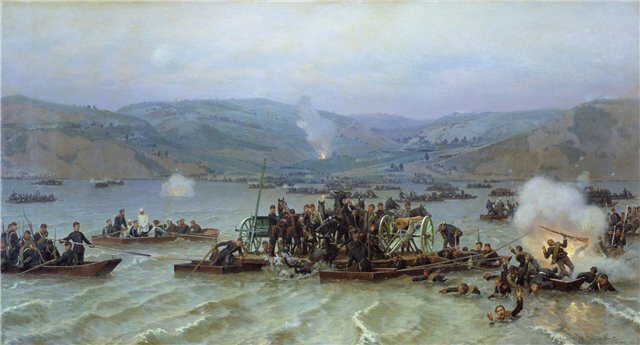
Crossing of the Russian army across the Danube in 1877
In overcoming the Danube in 1877, the pontoon with the sappers provided for the troops to cross the floating bridges, covering the flanks of the Turkish ships with river mines. When arranging ferries, in addition to standard facilities, local floating equipment and construction materials were widely used.
In the inheritance of the Red Army, the Tomilovsky pontoon-amusement park (load capacity of the floating bridge - 7) was transferred from the old army, Negovsky's motor-pontoon park (load capacity of the floating bridge - up to 20), easy transport facilities: a bag and a folding sailing boat of M.A. .Iolshina, inflatable floats Polyansky. These funds were taken as tabular and were used during the Civil War 1918 - 1920.
The insufficient amount of the personnel means made local and handy tools (fishing boats, ferries, barges, barrels, logs, etc.) widely used.
The role of local and improvised means increased even more, since the use of existing sedentary pontoon parks to provide crossings during the sequential overcoming of several rivers was impossible.
In the period from 1921 to 1941, the Polyansky float was upgraded, the load capacity of the pontoon-amusement park was increased - the bridge to 10 tons. In 1926 - 1927. Creates a ferry-bridge park on inflatable boats A-2 (load capacity 9 t). The park was transported on horse-drawn carts. Experiments were conducted on the use of tugboats, outboard motors with power from 5 to 12 hp.
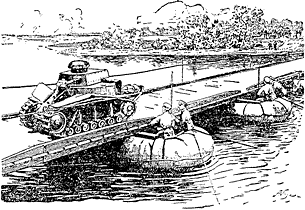 In 1932, the MPA-3 pontoon fleet on A-3 boats with a maximum carrying capacity of 14 tons was put into service. The MPA-3 fleet was transported on carts adapted for both horse and mechanical traction.
In 1932, the MPA-3 pontoon fleet on A-3 boats with a maximum carrying capacity of 14 tons was put into service. The MPA-3 fleet was transported on carts adapted for both horse and mechanical traction.Appearance tanks weighing 32 tons and artillery systems with an axle load of 9 tons determined the creation of two types of pontoon parks: heavy and light. This task was successfully accomplished by the Military Engineering Academy and the Military Engineering Training Ground (NIMI RKKA from December 12, 1934) in 1934-1935, when the heavy N2P pontoon fleet was adopted by the Red Army, and soon the light fleet NLP. Pontoon parks were developed under the direction of I.G. Popov by a group of specialists: S.V. Zavadsky, B.N. Korchemkin, A.I. Uglichinin, N.A. Trenke, I.F.Korolev and others. For the first time, quality steel was used in these parks for the manufacture of the upper structure, and towing boats were used for the motorization of ferries.
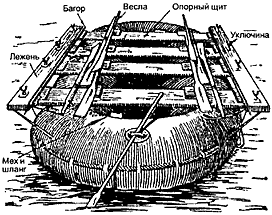 The development of the domestic motor transport industry made it possible to use at the beginning of the tractor for transportation of new parks, and then cars.
The development of the domestic motor transport industry made it possible to use at the beginning of the tractor for transportation of new parks, and then cars.The carrying capacity of the ferry from the H2P - 50 t park pontoons. The H2P park consisted of open-type metal pontoons, span structures made of metal girders, gantry piers and wooden flooring boards. Transportation was carried out on cars ZIS-5. The main drawback of the park, identified in the course of subsequent operation, was the low survivability due to open-air (open) pontoons.
For motorization of new pontoon parks were developed: boat BMK-70, ship outboard engines SZ-10 and SZ-20 (for the movement of ferries from N2P and NLP).
In 1935, for trial operation, one set of the HNNUMP fleet with aluminum alloy pontoons was manufactured.
The assembly of pontoon-bridge structures from a set of standardized elements with a wide variation in the number of pontoons in the floating support, runs in the supporting structure and the span length of the bridge made it possible to build floating bridges and collect ferries of various payloads. To increase the rate of installation of the bridge from the new parks, a hinged-cantilever bridge pick-up system of the MdPA-3 type park was adopted, at which the river part of the park was made up of identical links collected along the coast, and then entered into the bridge line and quickly closed with two simple hinged locks. The inclusion of the BMK-70 tugboat and the use of outboard outboard engines NW-10 and NW-20 contributed to the reduction of bridge pickup time.
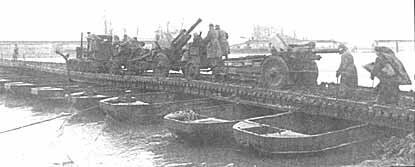 These technical solutions of NLP and N2P parks provided them with high tactical and technical indicators, and the principles of formation of pontoon-bridge structures incorporated in them turned out to be so successful that they were later used in the development of even the post-war pontoon-bridge park of the Chamber of Commerce and Industry, which essentially represented a deep modernization of the N2P park .
These technical solutions of NLP and N2P parks provided them with high tactical and technical indicators, and the principles of formation of pontoon-bridge structures incorporated in them turned out to be so successful that they were later used in the development of even the post-war pontoon-bridge park of the Chamber of Commerce and Industry, which essentially represented a deep modernization of the N2P park .From the H2P fleet set, floating bridges of the articulated cantilever system with a load capacity of 12 and 24 tons and ferries with a maximum load capacity of 50 tons were initially built. After adopting the heavy tank KB, the continuous system bridges were developed and tested in 1940, which ensured bridges of elements of the HNNUMP fleet for loads of up to 2 tons. At the same time, instructions were given to the troops on assembling six types of bridges in the park: 60, 16, 20, 30, 35 and 40 tons, as a hinged-console, and continuous circuit. It should be noted that at this time the Wehrmacht had a pontoon-bridge park with a maximum payload of up to 60 tons, and the US Army - up to 16 tons.
The main disadvantage of the mentioned facilities is low transport characteristics (payload, maneuverability), did not correspond to highly maneuverable military operations.
In 1939, a special pontoon park SP-19 was adopted, which had closed self-propelled pontoons and allowed to direct double-track bridges and assemble ferries for any military cargo (from 30 to 120) through wide water barriers with high flow rates.
ZIS-5 for the transportation of the Pontoon Park H2P
In the years of the Great Patriotic War, the existing and modern transfer means are modernized:
- DMP-42 was developed by significantly modernizing the wooden bridge park DMP-41;
- wooden light pontoon-bridge park DLP (carrying capacity of the bridge and the ferry - up to 30 t);
- park Н2П-41 - modernized version Н2П;
- heavy bridge park TMP (with metal closed semi-pontons).
Pontoon park H-2-P, towed by tractors C-65, moving to the front
Pontoon-bridge parks HNNUMXP and TMP on the main performance characteristics - simplicity of design, carrying capacity, ease of operation, high rates of bridge laying were more advanced than similar means of the German-fascist army and the Anglo-American troops.
The means of motorization were developed in the form of outboard outboard motors and tugboats: BMK-70 (1943 g.) And BMK-50 (1945g.).
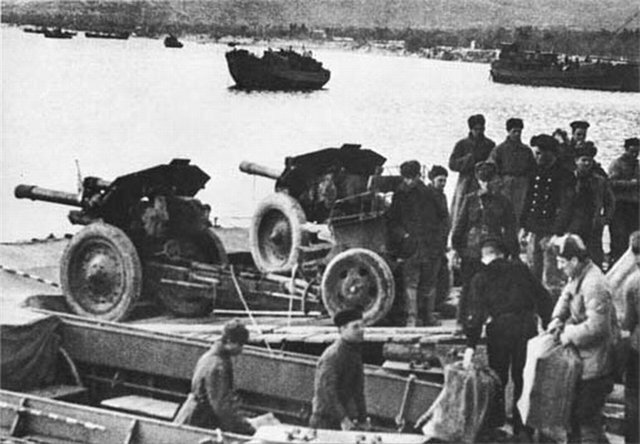
Loading howitzers on the pontoons. District Novorossisk, August 1943 g
The successful experience of operating pontoon-bridge parks with wooden pontoons made it possible to develop and adopt the light DLP park as a means of service in 1943. Two different types of floating bridges could be assembled from kleifanerny semi-pontoons of two types weighing 640 kg. Hidden semi pontoons could be invested in one another, which made it possible to transport several products on an ordinary truck. The pontoon frame was assembled from pine planks and bars and was sheathed with bakelized plywood.
The DLP fleet allowed the construction of bridges with payloads of 10, 16 and 30 tons and ferries with payloads of 6, 10, 16 and 30 tons. The maximum length of the bridge with the 10 tonnage from the DLP park set is 163 m, and the 30-tonne is 56 m. The DLP park is approximately twice the NLP park in terms of bridge pick-up and was more difficult to combat in combat conditions.
A significant drawback of wooden parks was the need to pre-soak them after long-term transportation or storage.
After the war in 1945-1947. taking into account the operating experience, a new wooden pontoon park DMP-45 with a load capacity of 60 t with advanced pontoons was developed.
Of great historical interest is the experience of overcoming water obstacles by troops with weapons and military equipment during the Second World War. The widespread use of crossing means in conducting large-scale military operations made it possible to take a fresh look at their correlation among the troops: there was a gradual abandonment of bridge crossings in favor of ferry and amphibious landing - due to their greater survivability and maneuverability.
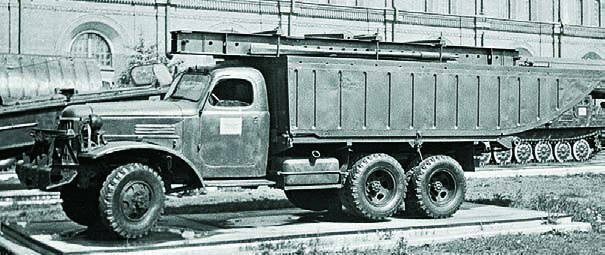
ZIS-151А with the bow section of the pontoon park of the CCI, 1954 g
In 1946-1949 developed a heavy pontoon park of the Chamber of Commerce and Industry, in which the idea of combining a package of elements of a span structure and a carriageway located on its rotary turnstile, and the roadway was partially implemented, eliminating the need for pontoon carriers carrying 220 kg and flooring 80-kg shields and significantly reduce bridge pickup time. Load carrying capacity of floating bridges - 16, 50 and 70 t, ferries - 16, 35, 50 and 70 t. The operations of unloading the pontoon unit on the water and loading it onto the car were mechanized. The park was transported by cars ZIS-151 and ZIL-157 (from 1961). Motorization of the park on the water was carried out by the towing motor boats BMK-90 or BMK-150.
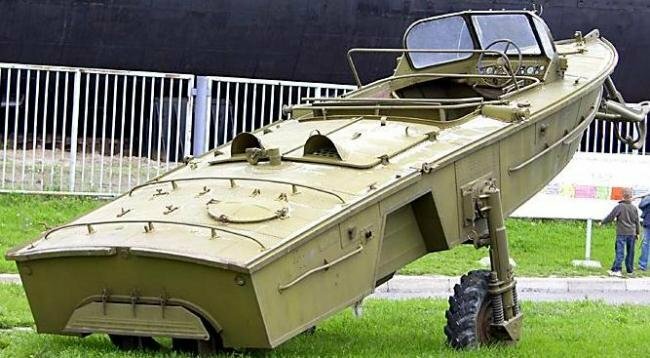
Towing - motor boat BMK-150
In 1949 - 1952 developed and in 1953. adopted light pontoon park BOB with the use in its design of the structural elements of the park of the Chamber of Commerce, but with a solution to the blockiness principle to a greater extent.
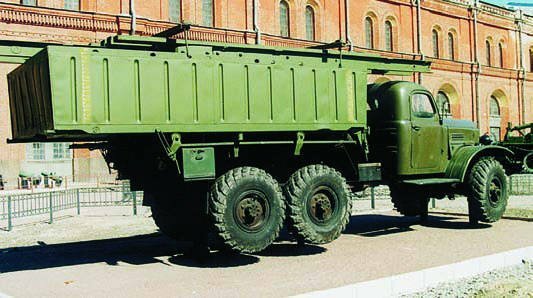
ZIL-157K with a section of the BOB pontoon park, 1962 g
In 1960, in return for the parks of the Chamber of Commerce and Industry and BOB, the PMP pontoon-bridge park was adopted, which received worldwide recognition, the progressive design of which was used as a prototype for creating pontoon parks of the US and German armies.
A large team of specialists took part in the development of the park, including the main creative initiators: Yu.N. Glazunov, MM Mikhailov, V.I. Asev, S.I. Polyakov, A.I. Londarev, I.A. Chechin , B.K. Komarov, A.S.Kriksunov, V.I. Saveliev, and others. In 1963, the work on the creation of the PMP park was awarded the Lenin Prize.
The floating bridge from the PMP park differed from the previous products on separate supports (CCI and LTP) by its design in the form of a continuous ribbon of metal displaced links joined together, which are folded into a compact unit in the transport position.
For the first time, the idea of combining all the elements of a floating bridge, a floating support carrying a span structure and a carriageway, was put into practice.
Such a bridge construction provided:
- reduction of the bridge pickup time by several times;
- a multiple increase in the carrying capacity of the bridge due to the roadway with a width of 6,5 m;
- quick pairing of the bridge with the shore and elimination of the need for the device of the shore piers due to the successful design of the shore links and the presence of a steel lining, laid close to the shore link;
- good fitability of the floating bridge in the cross-sectional profile of the water barrier due to low draft and effective construction of the coastal links;
- high durability of the floating bridge and ferries;
- quick transition from the floating bridge to the ferry crossing due to the simplicity of uncoupling the links;
- reduction of the number of pontoon vehicles of the park and the fleet calculation service;
- the possibility of approaching the ferries to the shore in shallow water conditions and the absence of the need to arrange marinas
- for loading and unloading transported equipment.
In the future, the park was modernized and adopted in 1975 for service under the code PMM-M. The upgrade was as follows:
- Inclusion of hydrodynamic shields with the park to increase the stability of the bridge from 2 to 3 m / s;
- change of the coastal link design: its deck is made straight without a break;
- redesigned pavement, which increased its durability;
- introduction to the fleet: additional four tugboats BMK-T, reconnaissance means for water obstacles, a set of tools for the commandant’s service at ferries, rigging equipment to hold a bridge on rivers with increased flow rates, facilities for ferries in winter.
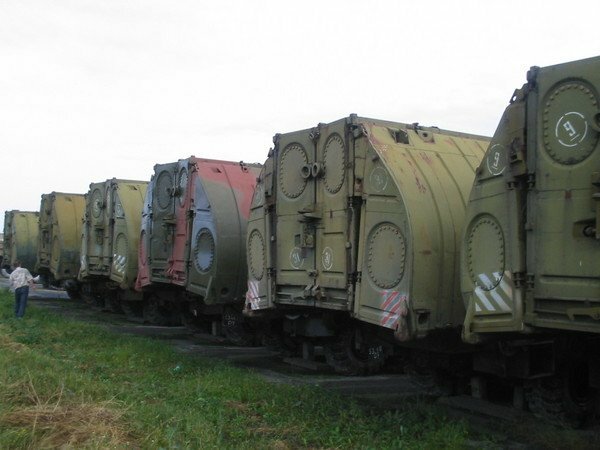
Pontoons PMP, PPS-84, NARM
Subsequently, as a result of work on the development of the construction of the floating bridge-tape, the means of its motorization and transportation of the PMP park kit, the PPS-84 and PP-91 parks were developed and mass-produced.
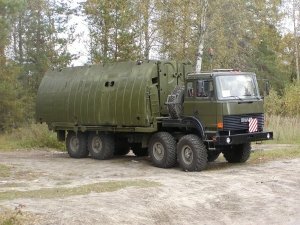
PP-91
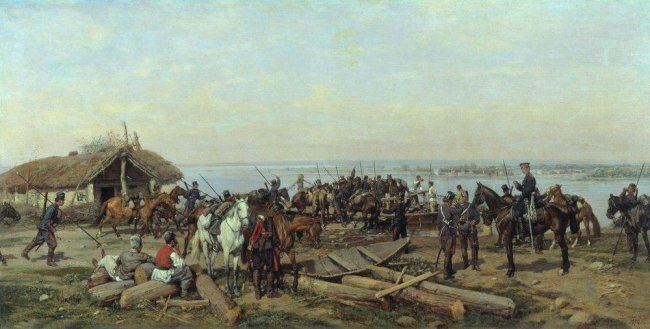
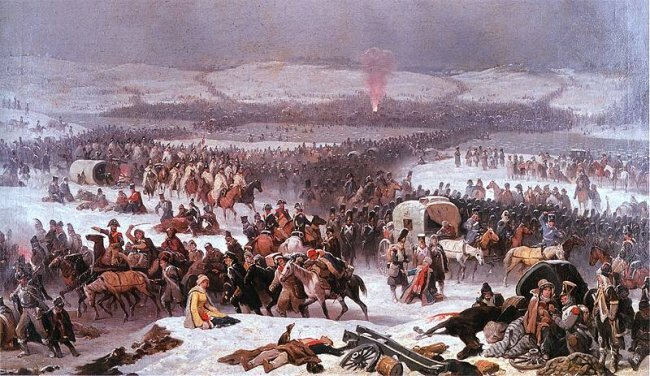
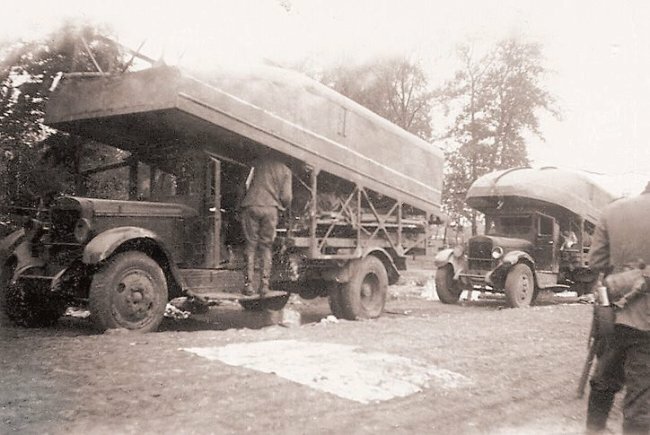
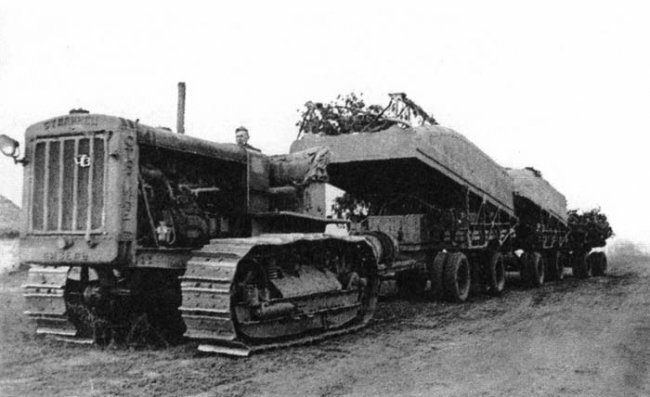
Information